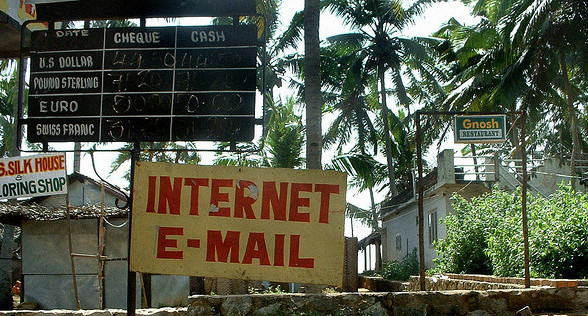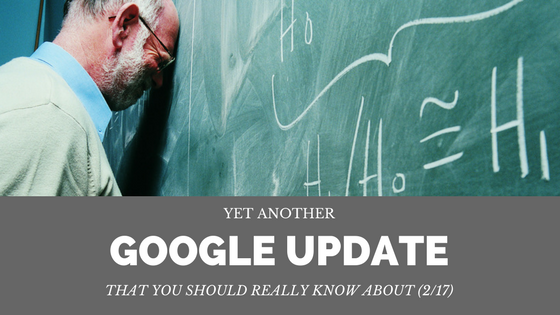
[ Source: mattwi1s0n – Internet Email, CC BY-SA 2.0 ]
“Wait a minute,” you might be thinking. “There are over 3.2 billion email accounts. 91% of people check their email at leastonce a day. Over 50% of all emails are opened on mobile devices. How on earth am I wasting my time with email marketing?”
Look, there are over 409,000 Google results for “email marketing tips.” You could spend a month reading about how to write the perfect subject line, what your first three emails should say, what words you NEVER use in an email.
And tools – boy do we have tools! Automated email campaigns, templates, behavior-based responses, CRM integration. You name it.
If you’re not careful, all these tips, guides and tools will completely waste your time with premature detail work.
Before you start playing with cool tools, crafting the perfect subject line, or randomly writing one-off broadcast emails to your entire customer list. Before you put down a SINGLE WORD – you need one thing: an email strategy.
Here are three things you can do today to get a grip on your email strategy:
1. Set a goal, determine your objective.
If you are looking to run an email campaign, chances are you already have a goal in mind. You need a goal AND an objective. They are not the same thing.
What do you want to achieve? That’s your goal.
How will you know you achieved it? That’s your objective.
- Goal: Sell more amazing glow-in-the-dark, underwater toasters.
- Objective: Increase sales by 10% in the next quarter.
Open rates and click-through rates are not objectives. They are performance metrics. Have a campaign with great open and click-through rates but didn’t meet your objective? That’s an opportunity to diagnose where your sales process broke down and fix it.
What do you want people to do or know as a result of your campaign?
Do you want to educate people about why your product is better than other competing solutions? Do you want to build awareness and reputation so people trust you? Secure long-term business relationships? Educate prospects about your product? Maybe it’s a one-off Flash Sale campaign intended only to run for a week to sell a specific product.
You can’t do it all at once. Pick a goal. Set the objective that will let you know how close you came to reaching your goal.
2. Choose your audience.
Now that you’ve chosen a goal for your email marketing campaign, you need to choose an audience.
Not all of your audiences are the same. Is the campaign you are considering focused on prospective customers, new customers, or existing/long-term customers. Are you focusing on a specific service or product line, or positioning yourself as a valued expert in a particular area?
Depending on who you’re talking to, and the type of relationship you have (prospect, one-time customer, repeat customer, etc), you’ll need to develop unique messages and campaign ‘stages’ or sub-campaigns.
For now, consider this: If you have thousands of email subscribers and they all receive the exact same messages at the same time – no matter what – you are seriously at risk of seeing a lot of list attrition – unsubscribes.
If you don’t choose your audience, your audience won’t choose you.
3. Map out the conversation – create the email journey
Once you have a specific audience, a goal and an objective, what are you going to do and say in your campaign?
Put yourself in the customer’s shoes. First of all, you did something to get them on your list in the first place. What was the core reason why they chose to engage with you? What’s the next, most helpful piece of information you can provide that will give them a better experience or provide more value?
One of the best things about email marketing? It’s a permission-based conversation. You don’t have to tell your customer or prospect everything at once. But you should have a logic to the flow and timing of your campaign.
You can map this out on a white board, a piece of paper, or your favorite fancy digital tool. You don’t need long notes to define each email, either – they are placeholders to drive the email copy.
- Email One: Thanks / deliver requested info about underwater toaster.
- Email Two: Question – what do you want from an underwater toaster?
- Email Three: Ever seen how an underwater toaster works? [Video]
- etc. etc. etc.
Behavior-based technology is really taking the audience-specific email conversation to the next level, with complex processes that can send a specific email to a user after they looked at a particular web page or download a file. And that’s awesome. But if you’re just starting out, spend your time focusing on the value you can provide in a ‘simulated conversation.’
Mapping it out manages the conversation. It gives your copywriter (or you) a plan, so you aren’t just staring at a blank page wondering what to write next.
The benefits of your email strategy
Once you have all three elements: a goal (and objective); a specific audience; an outline of your conversation you have a map to what you will actually write. And then comes the fun stuff: email subject lines, body copy, calls to action, supporting material, etc. The actual campaign.
But while you do all that work creating the campaign, and while you’re actually executing it, your strategy gives you a road map. A ‘big picture’ plan to review and adjust.
Remember, most people won’t read every email – so you can cover the same general topic from different angles across multiple emails. Let them know one amazing thing in one email. Give them an example of it in another. All the while, as long as you add value, it’s ok to add a call to action reminding them “Hey, you can go here to buy this/learn more/etc.”
The great thing is that you will naturally develop multiple campaigns for distinct goals and audiences – and this keeps you from sending the same message to everyone on your list at the same time, all the time. It insures that you deliver value.



